I am currently working on creating a tanglegram where species reared are on one side and substrate reared on is on the other side. However, I need the output to also be a tanglegram, having each side of the chart be the tips of a dendogram. I currently have phylogenies of both the species and substrates in Newick formats.
I successfully used the 'ape' package and the plot.phylo() function to generate the 2 phylogenies. I then used the following code from this post to export the order of tips:
tree <- ladderize(tree, right = FALSE)
is_tip <- tree$edge[,2] <= length(tree$tip.label)
ordered_tips <- tree$edge[is_tip, 2]
x<-tree$tip.label[ordered_tips]
write.csv(x,file="test.csv",sep ="\t")
I then used the order of the tips to generate a matrix for use in the 'bipartite' package.
However, of course, the spacing on the bipartite graph doesn't match up with the spacing on the dengdrograms, so I can't just copy/paste them next to one another in an outside image manipulation program. I am wondering if there is a way that I can generate a chart that combines the dendrograms and bipartite graph to make a tanglegram in rstudio?
Here is a simplified visual example of what I am hoping to do:
I am looking to combine 2 phylogenetic trees that, for example, look like this
tree1<-read.tree(text="((C,B),A);")
plot(tree1)
Output: tree1
tree2<-read.tree(text="((G,F),(E,D));")
plot(tree2)
Output: tree2
With a bipartite graph
web = matrix(
c(0, 5, 0, 10, 10, 0, 0, 3, 0, 0, 0, 1),
nrow=4,
ncol=3,
byrow = TRUE,
dimnames = list(c("D","E","F","G"),c("A","B","C")))
plotweb(web,method="normal",empty="false",text.rot="90")
Output: bipartite plot
To instead generate a plot that looks like this (I just did the following in an image editor, the expansive dataset I am actually using is far larger)
Desired output: tanglegram
